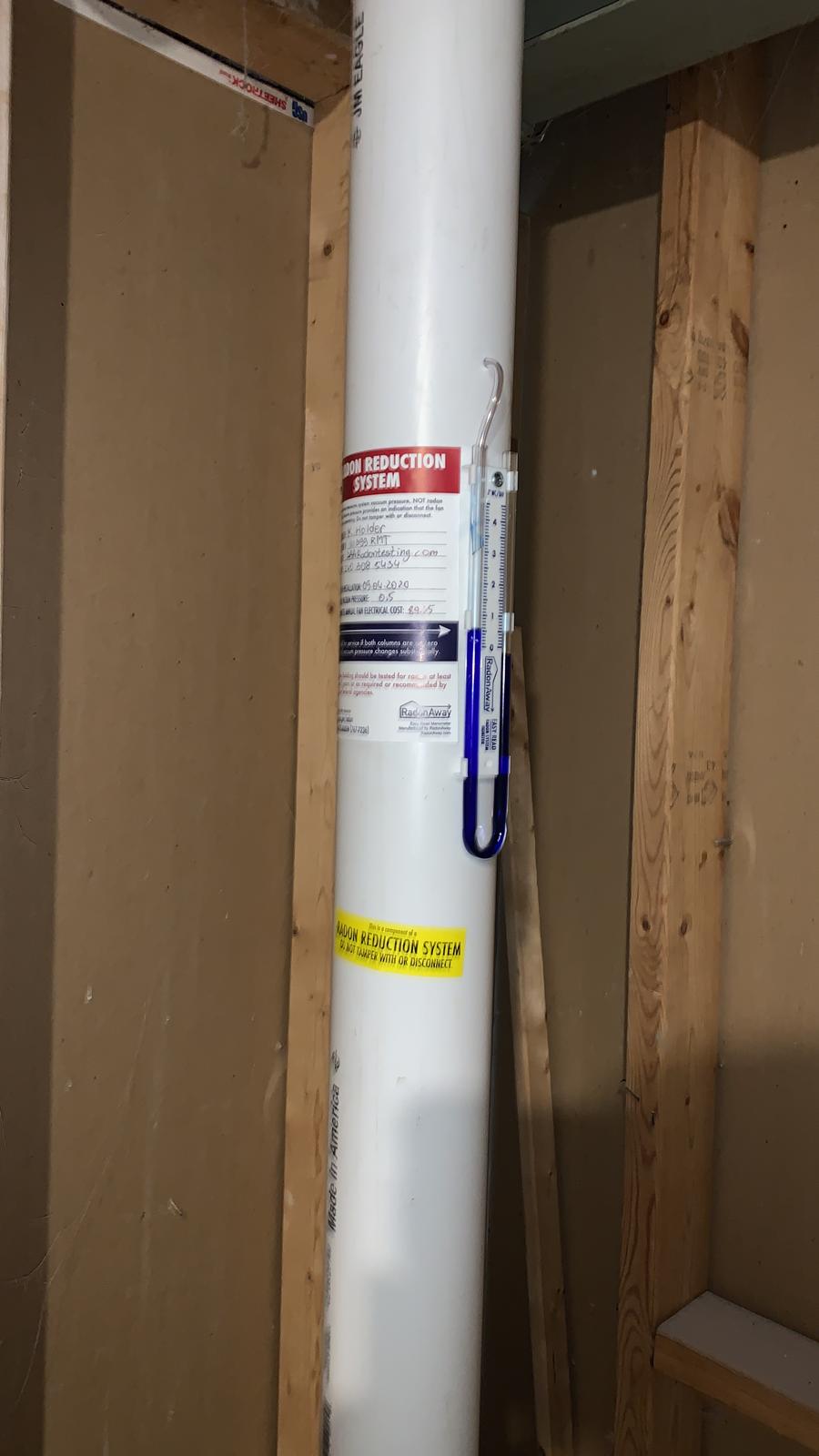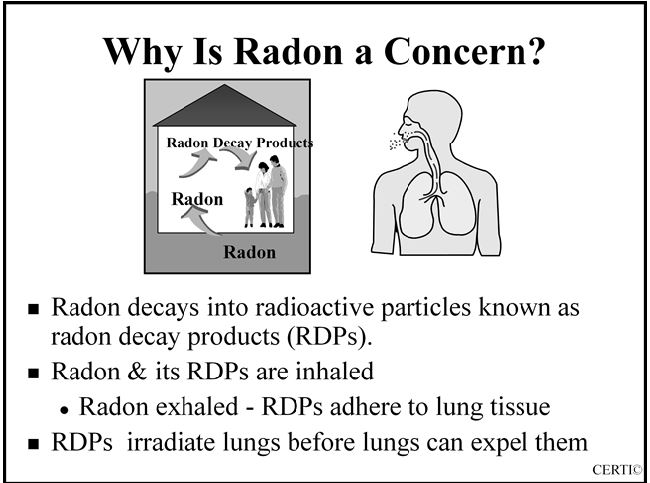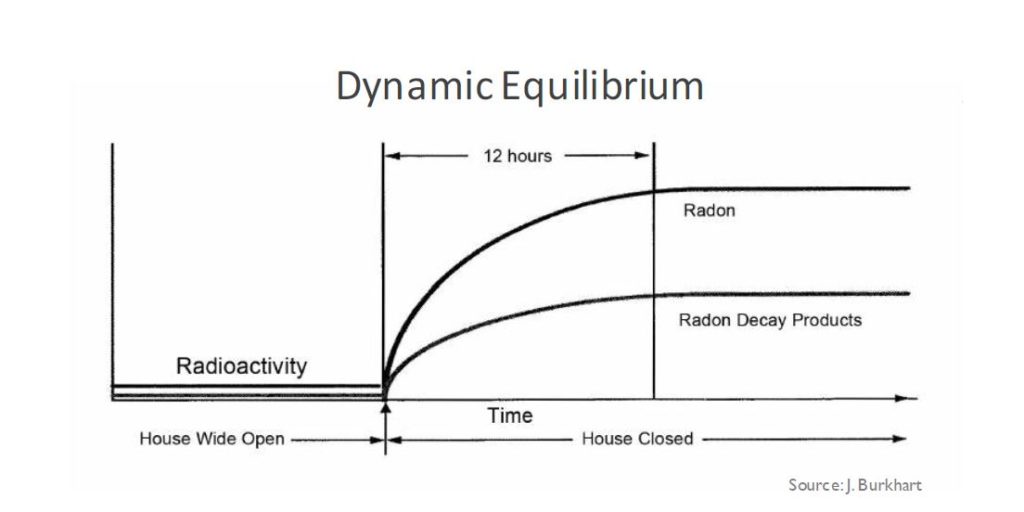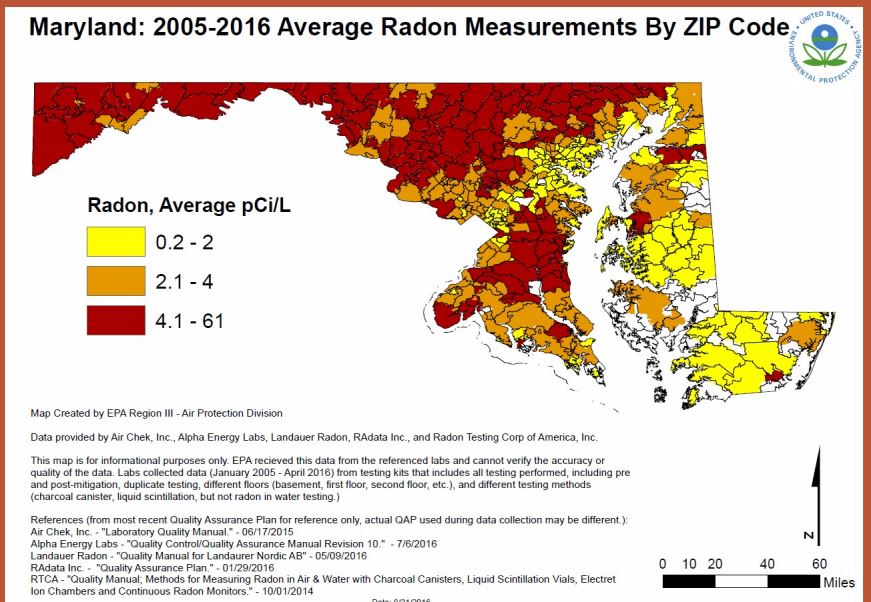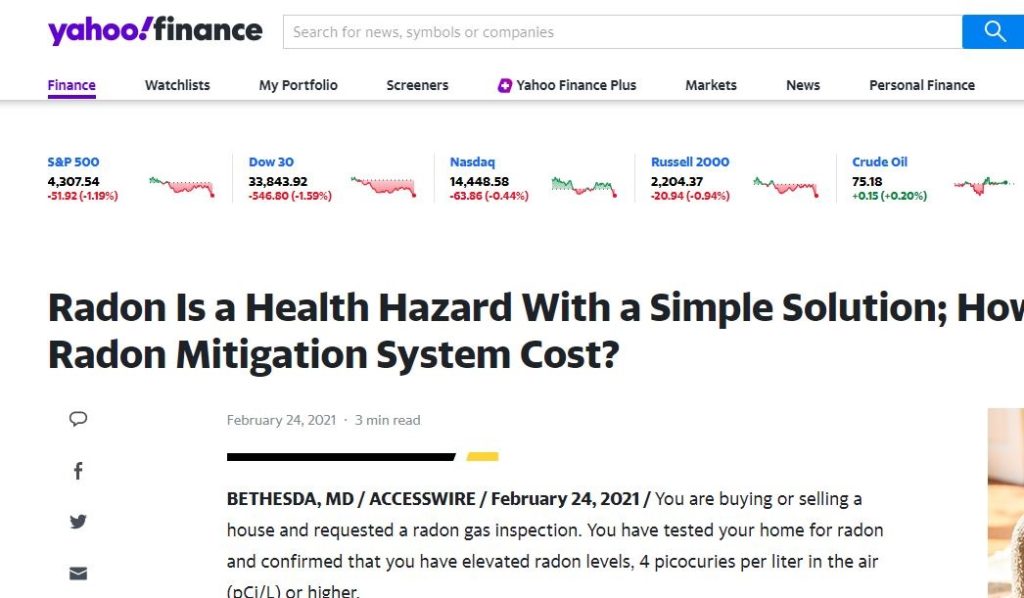Category: Uncategorized
- Written by: Kate Holder
- Category: Uncategorized
- Published: January 21, 2022

Active Soil depressurization (ASD)
- Pay One time(No hidden Cost)
- ASD system will work for you 24/7/365
- Pay Only for Actual Results, after we lower radon level in your home
- We guarantee to reduce radon below EPA ACTION level 4pci/l*
- We use PRO-grade Materials
- We Caulk major cracks in the floor
- We close cinder block cells
- We test for backdraft
- 5 years Fan Manufacturing Warranty
- We provide Post-Mitigation Radon testing – Certified Radon Inspection
- We will give you an Accustar Radon test kit(shipping included)for your 6-month Re-test with an independent radon testing lab. Absolutely FREE just for becoming a client with Alfa Air Agency!
- We are removing radon from your home so that you can feel safe again in your basement, which means more family time at home.
The price of a given system depends on :
1. Length of Piping Needed
2. Amount of Floor Caulking
3. Type of Siding
4. Access Issues
5. Obstacles for Ladders
6. Difficulty and # of Bends in the Discharge
7. Electrical Difficulty
8. Size of Building
9. Amount of Temporary Floor Protection
10. Obstacles and Conditions in Crawlspace
11. Custom Painting
12. Remote U-tube
13. Truck-to-System Distance
14. System Alarm Added
15. Sump Pit Sealing Challenges
16. Gravel/Dirt-floored Crawl Space
17. Number of Suction Points
18. Number of Sump Pits
19. Multiple Fans Needed
20. No Gravel Under the Slab
21. Discharges Higher Than Two Stories
22. Any Small or Medium Factor if Extreme in Nature
23. Heat Ducts Under Slab Floor
24. Excessively High Water Table
25. French Drains
26. Clay Under the Slab
27. In-slab Radiant Heat or Electrical
28. No Easy, Suitable Location
29. Finished Room Between Suction Points
30. Homes pre-1970 & Esp. Pre-1940
- Written by: Kate Holder
- Category: Uncategorized
- Published: January 19, 2022
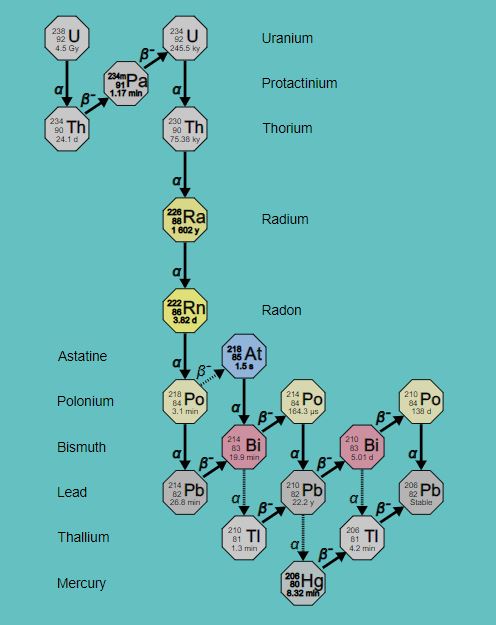
- Radon is a radioactive gas with a short radioactive decay half-time (< 4 days), releasing alpha particles. However, it is continually produced and released by rocks or other materials containing uranium.
- Radon is a heavy gas and will accumulate in indoor air and low-lying areas, particularly basements in areas with high granite content.
- Radon is an alpha-decay element from radium, which is itself an alpha-decay product of uranium and thorium.
- Granite (igneous rock) contains higher concentrations of uranium and thorium than does sedimentary rock, hence its greater release of radon.
As radon itself decays, it produces additional short-lived radioactive particles that emit alpha radiation and beta radiation. These radioactive products are called radon daughters. Radon daughters can bind to particles, such as dust and tobacco smoke, and be inhaled.
Concentrations of radon and its radioactive decay products are generally higher indoors than outdoors in homes, schools, and office buildings. This is particularly true of newer construction designed to be more energy-efficient with decreased ventilation from outdoors.
Radon can also be released from groundwater, particularly well water, into the air during showering, washing of clothes and dishes, and other disturbances, such as flushing toilets. Radon is also released into the air in a home where natural gas or propane is burned in a stove or furnace. Most inhaled radon is either exhaled or retained within the lungs; and not transmitted to other areas of the body. Damage from inhalation is therefore primarily local to the lungs, particularly at bronchial bifurcations, where impaction of radioactive particles is more likely.
Ingestion of radon and radon daughters –primarily in drinking water from groundwater sources- although a secondary pathway of concern for adults, is a primary exposure route of concern for the developing fetus. While most ingested radon gas (dissolved in water) is exhaled after absorption, some can undergo radioactive decay within organs to which it is distributed, including fetal transfer via the placenta. This pathway is the primary pathway for exposure of the fetus.
All individuals are at risk of adverse health effects if sufficient radon exposure occurs, predominantly an increased risk of lung cancer in the future.
There is suggestive evidence that radon exposure during pregnancy is associated with the development of fetal malformations. The evidence of an association is strongest for cleft lip and cleft palate; skeletal abnormalities including the feet and lower limbs, and spine may also be associated with radon exposure.
Health Impacts
Alpha particles do not penetrate skin, but if the elements producing them are inhaled or ingested, radioactive damage can occur to the cells lining the respiratory and gastrointestinal tract; radon can be absorbed into the bloodstream and be transported to other organs, where decay products can continue to release radiation.
The primary health concern is damage to respiratory epithelium, with resulting increased risk of lung cancer. Radon is the 2nd leading cause of lung cancer, trailing far behind tobacco smoking. Radon is the largest cause of lung cancer in non-smokers.
While it is possible that a large exposure to alpha radiation early in pregnancy will lead to fetal demise, this has not been demonstrated for amounts of radiation exposure likely in residential settings.
Radiation to the nucleus of a cell can result in damage to DNA with potential errors in repair increasing as the number of alpha particles or other radiation source increase. Because alpha particles (a helium nucleus) cannot penetrate as gamma or X-rays can, damage is usually more localized and limited.
Two studies looking for epidemiological evidence of the potential birth defect impact of radon have found similar risks for orofacial defects such as cleft lip with or without cleft palate. While both studies have limitations, the fact that one used measurements of radon in drinking water, while the other used regional designations of radon in indoor air provide some evidence for concern, based on consistency of findings across studies using different assessment methodologies, and dose-response (by proxy).
Note, however, that the confidence intervals for the findings include 1, except for the highest quartile of exposure (see table below). Note, also, that other congenital malformations also show consistent and statistically significant trends. Because of multiple comparisons, some of these associations may be by chance alone. It should also be noted that the postulated radiation exposures are at levels below the EPA’s action level.
Also it is very important to emphasize that the background rate of orofacial malformations is approximately 1 in 1000 births, so even a doubling of the risk would only mean 2 in 1000 births, and no impact on the remaining 998. For perspective, this information could be presented to a “high exposure risk” patient, asking if there is a family history of cleft palate or cleft lip. In the absence of such a history, the potential exposure, while needing to be documented, is very unlikely to cause an abnormality.
Assessment & Risk Reduction
Do you or does someone in your home smoke?
Tobacco products contain uranium and radium, which generate radon and radon daughters by radioactive decay.
Tobacco smoke particulates can bind with existing radon daughter particles, and be inhaled and ingested.
Do you live in a county designated Zone 1 by the EPA’s categorization of indoor radon levels?
While the average indoor air concentration of radon is reported as 1.3 pCi/L of air, this can range from a low of <0.5 to more than 8 pCi/L (picocuries/liter of air as a measure of radioactive particle emissions –or 2 radioactive disintegrations of radon/minute in 1 liter of air).The EPA action level of 4 pCi/L air is not a health-based determination, but reflects the fact that commonly performed remediation techniques can reliably reduce dwelling air radon concentrations to below 4 pCi/L.
Are the bedrooms in your home in the basement or ground floor?
Radon is approximately 9 times as heavy as air, and thus will be higher in lower levels of the home. Consider to relocate upstairs.
Have you had your home tested for radon?
The EPA recommends that every home be tested for radon, the characteristics of the individual home determine the indoor radon concentration
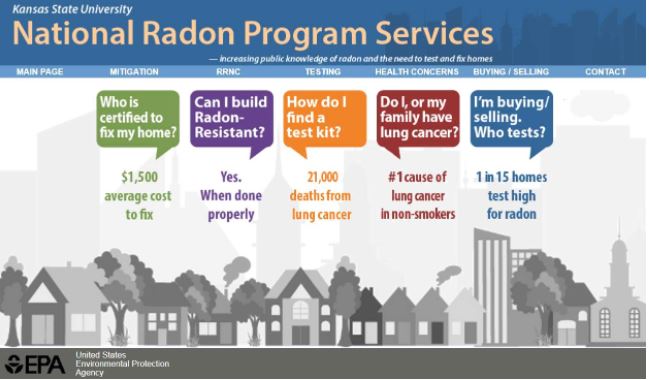
Do you drink water from a private well?
Public drinking water supplies are regulated by the EPA for alpha-emitting particles and radium (parent radionuclide of radon) in drinking water as a component of a multi-media mitigation program to address radon in both air and water.
Private well water is not routinely tested and is the responsibility of the homeowner to have performed.
In conclusion, radon is a gas with a radioactive decay half-time of less than 4 days. However, since radon is continuously produced by ores containing uranium and is a very heavy gas, it can accumulate in indoor air and low-lying areas. Additionally, radon decays and produces additional short-lived radioactive particles that emit alpha radiation and beta radiation called radon daughters. Radon daughters can bind to particles, such as dust and tobacco smoke, and be inhaled.
While all individuals are at risk of adverse health effects if sufficient radon exposures occurs, pregnant women and the fetus are the most vulnerable populations. Ingestion of radon and radon daughters, primarily in drinking water from groundwater sources, is a primary exposure route of concern for the developing fetus. Ingestion is the primary pathway for exposure of the fetus.
- Written by: Kate Holder
- Category: Uncategorized
- Published: November 11, 2021
3 Designs of Sump covers for radon mitigation system

Suction Drawn on Capped Sump
The other common method for drawing suction on the drain tiles is to insert the suction pipe through the air-tight over over the sump. When suction is drawn directly on the sump in this manner, it is increasingly important that the sump cover remain largely air-tight; leaks in the cover could result in substantial short-circuiting of house air into the system, reducing system performance.
- Tip #1 . Select a cover: pre-fabricated or DIY. Pic A. Take a sheet of hard plastic or Lucite, Plexiglass or even sheet metal. Its recommended that the covers be strong enough to support the weight of a person without breaking. Picture B and C represent pre-fabricated sump pump covers. They are made from molded polyurethane, polypropylene, ABS, or 1/4 to 1/2 tick clear plastic or Lucite.
- Tip #2. Where suction is to be drawn at the sump, the sump covers must have at least two to three penetrations: one (about 4.5 in. diameter) for the suction pipe; one (1 to 2 in. diameter) for the water discharge line from the sump pump; and one for the electrical connection to the sump pump. Sometimes the pump discharge line and the electrical connection pass through a single hole, reducing the number of holes from three to two.
- Tip #3. Another opening would be required for a waterless trap ( Pic. A and B) if water is expected from on top of the slab. Additional openings would be required if specific drain lines (such as an air conditioner condensate drain) were to be installed through the cover. Such additional openings should be minimized, to avoid complications with maintaining the cover’s seal over time .
All of these penetrations must be effectively sealed when the cover is installed.
- Written by: Kate Holder
- Category: Uncategorized
- Published: November 4, 2021
Step 1. Find your system MANOMETER. A manometer is a U-shaped tube filled with fluid(red, blue, yellow), it is also called Gage Fluid. It’s a visual gauge that tells you if your radon fan is running and at what static pressure.
Where is manometer ?
All active radon systems with fan usually will have a manometer. It is mounted on the pipe BELOW the Fan or next the the collection point. ( usually in the basement, closet, attic or garage )The exception is a passive radon reduction system, it does not have fan, not manometer.
Is the manometer showing radon level?
Answer is NO. Manometer has nothing to do with Radon level in the house. Manometer is measuring pressure (suction power) of the system. The suction created by the radon fan draws the fluid up on one side of the gauge. One side on manometer will have a clear soft tube which connects manometer and radon vent pipe. The other side on manometer is left open( its normal, it must be open. do not close it).
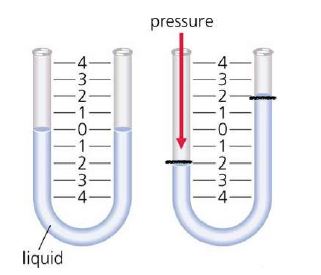
Step 2. Check the fluid levels. Are they Different? if YES, that’s good! The radon fan is working. Call right away Radon Mitigation provider if levels have changed from the Initial installation level. When liquid level is higher or lower than original, it means system resistance has changed., something below or above the fan is not allowing air to move at the same volume . Are the fluid levels equal? This is not good; your radon fan is not operating.
Step 3. Check the Electrical power connection. Is Your Radon Fan Really Dead? There are several things that may have caused the fan to shut down and you’ll want to check before calling a radon contractor to replace the fan. Please make sure your fan has electrical power. Check fan electrical switch. Did the breaker that your radon fan is wired to trip? Is the fan unplugged? Touch radon pipe, place your ear next to the pipe. If it is not vibrating and not making suctions noise, it time to replace fan.
Unfortunately, the fan is an electrical component of the system, and it has its life span too. It won’t last forever and must be replaced once in a while to keep the radon system operational.
Have questions about radon fan ? Call for a FREE Radon Consultation ☎ Office 240-308-5434
- Written by: Kate Holder
- Category: Uncategorized
- Published: November 4, 2021
There are several types of radon fans on the market, but all of them has basic characteristics and specifications : watts (fan power), duct diameter, recommended max operating pressure WC , typical CFM vs. Static Pressure WC.
Based on the combination of the house attributes , Alfa Air Agency will select a fan specifically for your property
Call for a FREE Radon Consultation ☎ Office 240-224-0577


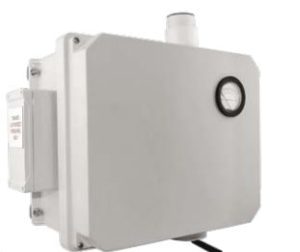
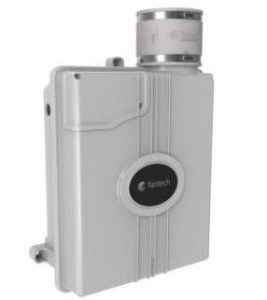
Which radon fan use ?
we need to know :
1.type of soil below your home
2. size of your home slab or crawl space
3. drain tile ?or gravel under slab?
4. number of turns/ elbows the system will have
WARNING! Normal operation of radon fan may affect the combustion airflow needed for safe operation of fuel burning equipment. Check for possible backdraft conditions on all combustion devices after installation.
Radon Fan Types by Total Foundation Area
| PIPE SIZE Nominal | Less than 1600 sq. feet | 1600 to 2500 sq. feet | Greater than 2500 sq. feet |
| 3 inch | Use Radon Fan Type: RP140, RP145, XP151 , XP201 Minimum rating:* 50 cfm @ 0.5″ WC [85m3/hr @ 125 Pa] | Use Radon Fan Type: RP145, RP260 Minimum rating:* 75 cfm @ 1.0″ WC [127m3/hr @ 250 Pa] | Radon fan to be sized by a certified/licensed radon mitigator |
| 4 inch | Use Radon Fan Type: RP140, RP145, XP151 , XP201 Minimum rating:* 50 cfm @ 0.5″ WC [85m3/hr @ 125 Pa] | Use Radon Fan Type: RP140, RP145, XP151 , XP201 Minimum rating:* 50 cfm @ 0.5″ WC [85m3/hr @ 125 Pa] | Radon fan to be sized by a certified/licensed radon mitigator |
High Suction Fans
In contrast, with tight soils like clay and sand it’s best to use a high suction fan. If the soil below your home is tight, you may sometimes need more than one suction point to create vacuum under your whole house.
High suction fans add $100 to $175 a year to your electric bill.
Examples of these fans include:
- GP401, GP501, GP500, and GX5 by RadonAway
- Force, Eagle, and Eagle Extreme by Festa
- RN4EC by Fantech
SYSTEM DESIGN CONSIDERATIONS
1.FAN SEALING. Pro Series Fans are factory sealed; no additional caulk or other materials are required to inhibit air
leakage.
2. ENVIRONMENTALS . Pro Series Fans are designed to perform year-round in all but the harshest climates without
additional concern for temperature or weather
3.ACOUSTICS . Pro Series Fans, when installed properly, operate with little or no noticeable noise to the building
occupants. The velocity of the outgoing air should be considered in the overall system design. In some cases the
“rushing” sound of the outlet air may be disturbing. In these instances, the use of a exhaust muffler is
recommended.
4. GROUND WATER. In the event that a temporary high water table results in water at or above slab level, water may be drawn into the riser pipes, thus blocking air flow to the Pro Series fan. Should this condition arise, it is
recommended that the fan be turned off until the water recedes, allowing for return to normal operation.
5. SLAB COVERAGE . Pro Series Fans can provide coverage up to 2000+ sq. ft. per slab penetration. This will primarily
depend on the sub-slab material in any particular installation. In general, the tighter the material, the smaller the
area covered per penetration.
Additional suction points can be added as required. It is recommended that a small pit (5 to 10
gallons in size) be created below the slab at each suction hole.
Ex. The RadonAway RP140 and 145 are best suited for general purpose use. The RP 260 can be used where additional airflow is required, and the RP265 and RP 380 are best suited for large slab, high airflow applications
6. ELECTRICAL WIRING. Pro Series Fans operate on standard 120V, 60Hz AC. All wiring must be performed in accordance with National Fire Protection (NFPA) National Electrical Code, Standard #70, current edition, for all commercial and industrial work, and state and local building codes.
A System Monitor, such as a manometer is required to notify the occupants of a fan system malfunction.
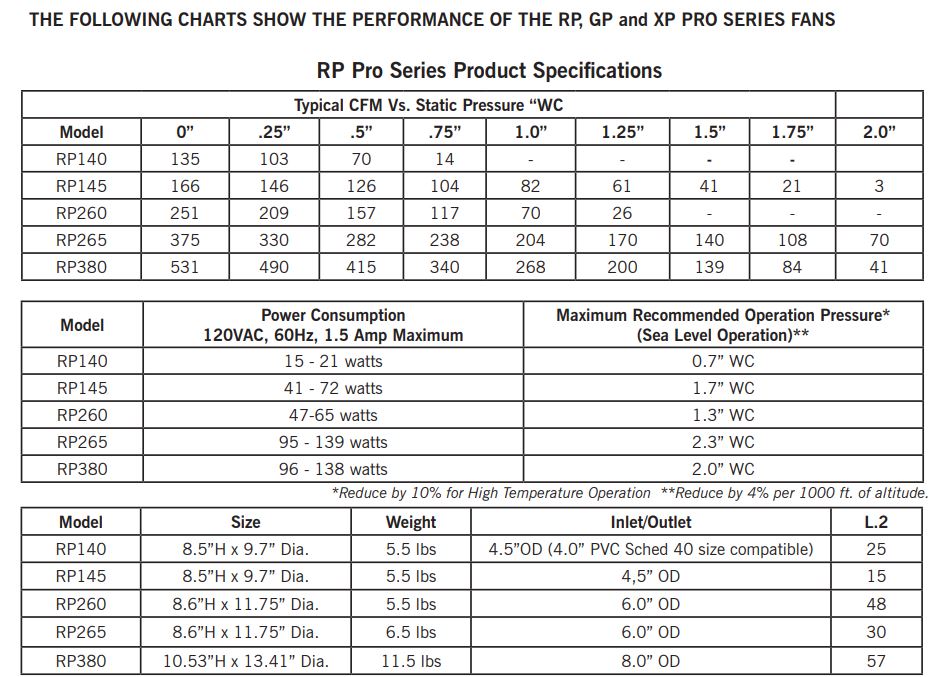
FAN OPERATING COST
Radon fans cost only pennies a day to operate. According to the U.S. Department of Energy, a typical U.S. household consumes about 11,000 kwh per year, costing an average of $1,034 annually (at $0.094 per kwh). The cost of running a medium-sized window fan 24/7 for 365 days (about 876 kwh X your kwh rate; at a kwh cost average of $0.094, the annual cost is $87.60).
Most popular fan RP145 ( $0.094 kwh rate) Annual Estimated Fan Operating Cost:
$44.47
Have questions about radon fan? Call for a FREE Radon Consultation ☎ Office 240-224-0577
- Written by: Kate Holder
- Category: Uncategorized
- Published: October 13, 2021
Radon is a radioactive gas and it does not have a smell. Radon is a colorless gas. However, radon can become visible when its very cold , the gas can become liquid if you freeze it to -79.2F. Moreover, it starts growing with a soft yellow light that becomes orange-red at temperature -319F.
In late the 80s , after many studies of radon gases exposure in the mines where it accumulates a lot, radon became recognized as a serious health hazard. In many states, it is illegal to sell a house without radon testing results disclosure to the new buyer. radon gas can easily accumulate in the air of poorly ventilated houses, in the basements to be more specific due to its weight. It is 7.5 times heavier than air. Exposure to this radioactive gas is dangerous. For many years, you greatly increase the risk of developing cancer, and damaging lung DNA. Radon is an unstable gas, it breaks down every 3.8 days and emits alpha radiation.
Alpha: A particle made up of two protons and two neutrons that flies out of the nucleus
of an atom at about 50% the speed of light.
• Very damaging due to mass and speed!
Alpha particles are released when radon and two of its decay products (Polonium 218 and 214)
decay.
Key Points to Remember!
• The concern of radon exposure is because it produces Ionizing Radiation.
- Written by: Kate Holder
- Category: Uncategorized
- Published: October 1, 2021
Awareness of Radon gas in Maryland Montgomery County homes is growing and so are questions about what is radon. Where radon comes from ? and Why its Dangerous. The major difference of radon gas with well-known natural gas is that radon does not have smell, color, taste.
What is Radon Gas ?
Radon is radioactive gas formed from uranium break down. Our houses are build on a top of soil. Most soil types consist of uranium. Therefore, toxic level of radon can build up in any house.

Properties of Radon
- Inert or Noble Gas(does not chemically react)
- Colorless
- Odorless
- Tasteless
- Naturally occurring
- Decays into Radioactive decay products=RDPs
Radon 222- Isotope(of radon) of most concern to public health
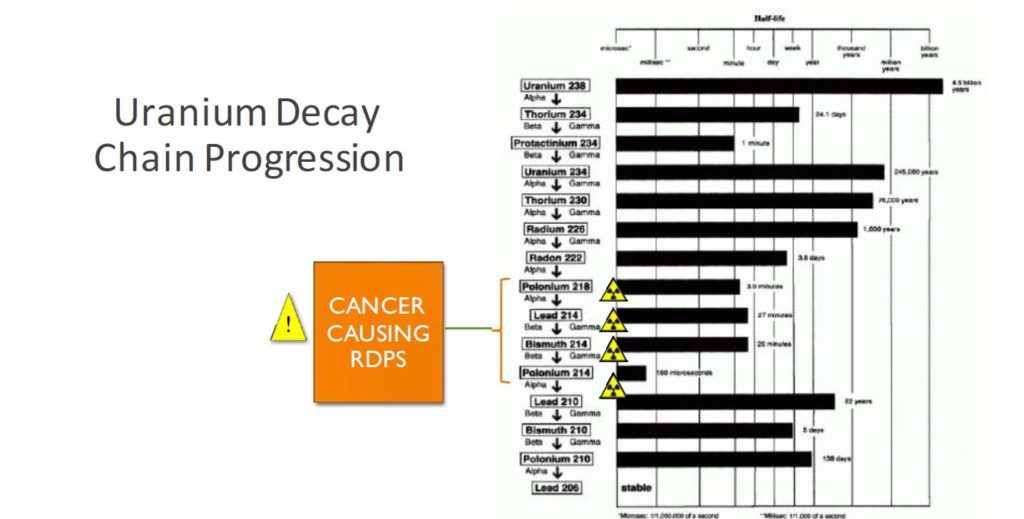
How Does Radon Enter my Home?
Radon gas usually comes to the house through cracks in the foundation, crawl space, fittings, sump pumps, piping or drains.
Why Should You Be Careful About Radon?
Radon gas is second leading cause of lung cancer. When radon gas is inhaled, it continues to emit radiation inside of your lungs , damaging the cells DNA.
Radon Decay Products:
- Source of cell damage in lungs
- Have static charge
- Chemically reactive
- Solid particles
- Heavy Metals : Polonium 218, Lead 214, Bismuth 214, Polonium 214
- Easily attach themselves to solid objects such as dust, smoke, walls, floors, clothing, or any other object
5 Radon Poisoning Symptoms
You wont have symptoms of radon poisoning right away. However, lung cancer can show up after many years of neglecting the high radon levels in the basement
- Shortness of breath that gets worse
- A persistent cough. Chronic, hacking, raspy coughing , something with mucus that has blood in it.
- Tightness or pain in the chest that doesn’t go away
- Trouble swallowing. Swelling of neck and face
- Hoarseness
How do I know if my Home is affected ?
Have your home radon tested. Radon usually much higher during the cold season. While DIY test kits are widely available on market, we do recommend working with professional calibrated equipment . To insure that you receive accurate results. Note: radon decays fast. Test kits if not shipped on time and analyzed in the lab will be VOID.
Alfa Air Agency provide Radon Inspection Services in DC metropolitan area. Short term test is only 48h. For more information on radon testing fill out Book Online appointment form.
- Written by: Kate Holder
- Category: Uncategorized
- Published: September 29, 2021
12 Steps to install radon mitigation in a day
Radon mitigation starts with reviewing the building structure and previous radon measurements.
- Walk Through : to determine the potential radon entry routes and establish the appropriate mitigation strategy.
- Communication Tests: If a sub-slab depressurization system is considered as possible choice of systems then communications test should be performed if sub-slab soil conditions are unknown.
- System Goals and Design : A radon reduction system shall be designed as an integral part of a dwelling, minimize noise and aesthetic impact on the structure.
- For SSD system piping PVC or ABS shall be used
- Radon Collection point: A min of one half cubic foot of sub-slab material shall be excavated at each suction point.
- Number of Suction points shall be determined by communication available throughout the sub-soil, the number of separate slabs that are significant radon sources and do not communicate with other slabs.
- Fan shall be sized to provide adequate vacuum and air flow characteristics for each mitigation installation.
- Exhaust location shall be at list 12″ above the roof line and at list 10 feet from any vent, window, or openings that are less then 2 ft below the exhaust point.
- Electrical connection: if the fan capacity exceeds 50% of the circuit capacity, then fan shall be wired with a dedicated circuit. There shall be electrical disconnect for the fan for homeowner and service use.
- Sealing cracks and non-functioning openings that emanate soil gas.
- Open cinder and concreate block cores and voids should be sealed
- System Monitoring: Each depressurization system shall include a vacuum indicator, a pressure U-tube manometer .
In conclusion, radon mitigation system installation is a complex process. It requires experience and knowledge of hazardous materials, basic building design, electrical wiring, construction materials. In addition, you should understand building pressurization/depressurization conditions and measurement procedures, radon reduction techniques. A licensed and experienced radon mitigation provider can install one SSD mitigation system in about 8 hours. For a homeowner, without proper tools and knowledge, this project can be a challenging, but rewording task.
- Written by: Kate Holder
- Category: Uncategorized
- Published: September 17, 2021
Where should you test for radon?
Best testing location
- Test in the lowest livable over each foundation slab
- Test in most frequently occupied spaces: bedroom, home office, family room
- 3 ft away from windows, doors
- 4 ft away from the fireplace
- away from direct sunlight
- Do not use window air conditioning of “fan” mode, but can be used on cooling recirculate mode only, must be 20′ away from the test kit
- never test in the crawlspace, sump pits, cellars, or other not livable areas such as a bathroom, kitchen, laundry room, or another area of High Humidity
- away from draft caused by heating, ventilation, air conditioning
- away from the ceiling fan( fans increase plate-out, affecting equilibrium resulting in false low reading)
- dehumidifiers must be at list 20′ away from the radon test kit
- Do not operate fireplace during testing time
- Written by: Kate Holder
- Category: Uncategorized
- Published: September 14, 2021
Measurement outcomes Impacted by following things (avoid false low or false high results):
1.Closed Building Conditions Rule. Radon gas is constantly decaying and re-occurring. It takes only 12 hours to reach Dynamic Equilibrium , RDP levels to stabilize once the radon rate into a building has been altered (ex. open doors, windows).
Closed Building Conditions:
- Windows Must be kept Closed for duration of test
- Doors maybe be opened for momentary exit/entry only
- Normal HVAC settings 72 degree +/- 5 degree
2. Decay Factors is especially important in passive devices like radon testing kit. Passive charcoal devices(Activated Carbon) must be shipped to the lab for analysis. During this “transit” time (from home to lab),the radon that has adsorbed onto the charcoal continues. To decay. Therefore, Start/Stop times and prompt shipping is very important. Start/Stop times are important in all radon measurements because remember, 1.0 pCi/L of radon decays at 2.22 disintegrations per minute. If the start/stop times are incorrect, the overall average will be incorrect. And test will be VOID.
3. Weather Conditions. Do not test during Severe weather conditions. The national weather services defines a severe storm as a storm that generates wind of 58 mph and or 3/4 inch diameter hail. However IEMA and ANSI define sever storms or periods of sustained winds of 30mph or more. The 96 hours rule mandatory for short term measurements of less then 96 h must not be conducted during severe wind conditions.
4. Diurnal Cycles
5. Background Radiation
6.Thoron
7. Device Consideration
Which one Radon Testing Kit should I pick ?
Passive Device: Radon Testing Kit
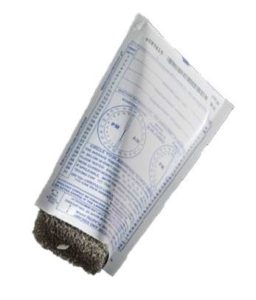
Activated Carbon (AC)
- Radon gas diffuses into the device
- Radon decays into RDPs
- sensitive to humidity and airflow
- sensitive to temperature
- RDPs adsorb onto carbon granules by molecular diffusion
- Gammas(RDPs) are measured (Bi214 and Pb 214)
- Exposed for 2-7 days
- Analyzed at the lab by weighing the device
- no tamper prevention
- must be returned to the lab FAST( if not analyzed promptly, radon and RDPs may decay beyond the LLD(lower limit of detection and test will be void.
- Results biased to last 12-24 hours of test

Activated Carbon (AC)
- Results biased to last 12-24 hours of test
- Sensitive to humidity and airflow
- 2-5 days test
- no tamper prevention
- must be returned to the lab FAST( if not analyzed promptly, radon and RDPs may decay beyond the LLD(lower limit of detection and test will be void.
- Sensitive to temperature
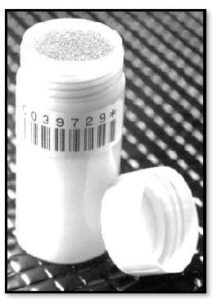
Liquid Scintillation Vials(LS)
- Alpha Scintillations
- Small vial with 4-5 grams of activated charcoal
- RDPs adsorbs onto Charcoal
- at the lab, charcoal is infused with liquid scintillation fluid
- must wait 4 hours before analysis can be done
- It takes 4 h for radon to equilibrate with its RDPS(Secular equilibrate)
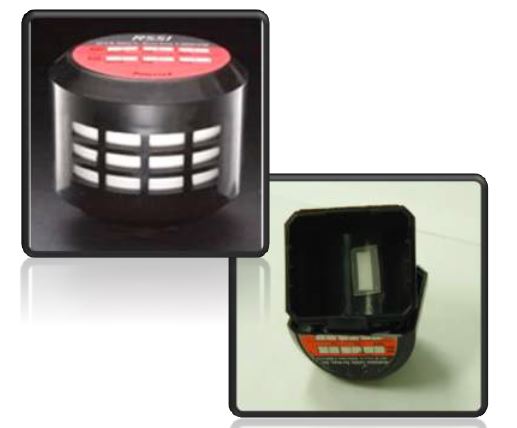
Alpha Track Detectors(AT)
- Alpha-sensitive plastic chip or film
- Filter allows only radon, not RDP’s, to passively diffuse into chamber
- RDPs emit alphas that pit the chip/film and leave tracks
- true integrated device
- Calibrated by tracks per unit area per pCi/L per day
- Not affected by temperature, humidity or airflow
- Analysis by lab
- Normal living conditions during test
- large precision error at low radon levels
- Low Sensitivity
- Long term 9o days to 1 year

Electret Ion Chambers (ES-Short term 50cc, EL – Long term 200cc)
- Measures Alphas
- Radon Passively diffused into chamber ( Ion pairs created when RDP alphas kick out electrons from oxygen and nitrogen atoms
- onsite analysis, no need to send to the lab
- reusable electret reusable
- Not affected by temperature, humidity, air flow
- can be used to measure radon in water
- can be used for long term or short term radon testing
- sensitive to background gamma radiation
- electrets can lose voltage in storage
- you will need voltmeter
- high radon levels or long exposure may deplete electret beyond its capacity
Radon gas is measured in picocuries per liter (pCi/L)


